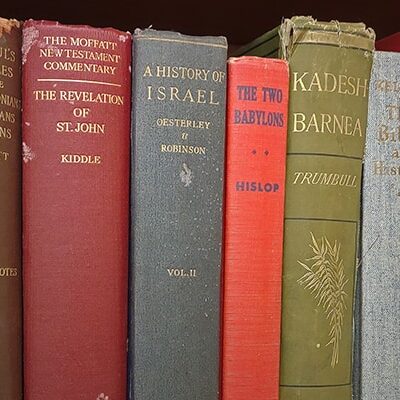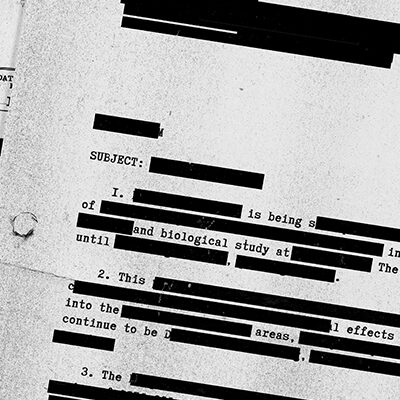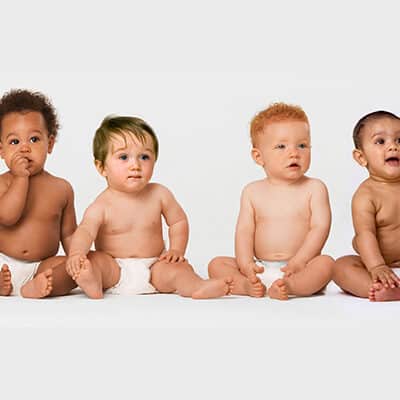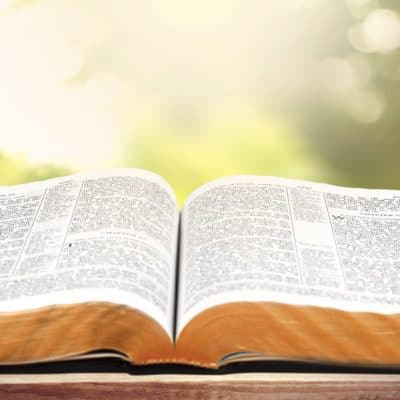Just as it keeps the weekly Sabbath, the Church of God also observes the annual holy days that were ordered by God, kept by the ancient Israelites and continued by the early New Testament Christians. These seven annual “appointed feasts” picture God’s plan of salvation for man!
Doctrinal Overview:
The annual holy days are named Passover, the First Day and Last Day of the Feast of Unleavened Bread, Pentecost, the Feast of Trumpets, the Day of Atonement, the Feast of Tabernacles and Last Great Day. These days occur on specific dates of the current Hebrew calendar, with the exception of Pentecost which is counted in a biblically prescribed manner. Like the weekly Sabbath, each holy day is reckoned from the evening sunset to the evening sunset.
The primary importance of the holy days is their function as spiritual symbols, outlining God’s plan of salvation for the individual and the world. These days include religious instruction and worship which provide for spiritual renewal on a regular basis.
The holy days serve as spiritual, psychological and social high points of the year. They allow people to get together in an atmosphere of leisure and enjoyment. In addition, these days provide opportunity to rest physically. Psychologically, the human need for change of pace and a time to forget the ordinary concerns of day-to-day life is met by these periodic festivals.
However, the central concern of these days is spiritual. Supplementing the weekly Sabbath services, there is still a need for intensive concentration on spiritual matters over a period of days without the distraction of the normal routine of making a living. The spring and autumn festival seasons supply this, especially the Feast of Tabernacles which is customarily held only in a few central locations. The holy days fulfill the spiritual objective of being holy convocations for the Church today. They also are “shadows of things to come,” pointing to and outlining the substance of God’s great plan of salvation for all mankind. This is briefly summarized as follows:
The Passover represents the sacrifice of Christ which pays for the sins of all who repent and accept it in faith. It also represents partaking of eternal life through Jesus Christ (shown by the bread and wine which symbolize His body and blood).
The Feast of Unleavened Bread is symbolic of the continual removing of sin from the spiritual sphere of one’s life and the continual practicing of a new, godly way of life represented by Christ, who was “unleavened,” –– that is, without sin.
Pentecost pictures both the foundation of this New Testament Church and the sending of the Holy Spirit for the individual.
The Feast of Trumpets symbolizes the spreading of the gospel to the world like the trumpet call of a watchman. It also looks forward to the return of Jesus Christ to set up the Kingdom of God on earth.
The Day of Atonement, a solemn day of fasting and self-searching, represents the time when sin shall be placed upon the head of its ultimate source, Satan the devil. The removal of the cause of evil allows God’s Kingdom to hold unopposed rulership over mankind.
The Feast of Tabernacles is symbolic of the millennial rule of God through Jesus Christ and His saints. It shall be followed by an opportunity for salvation for all who have lived and died and were not previously called to have a part in the first resurrection –– this is the meaning behind the Last Great Day. The culmination shall be the new heaven and new earth (Rev. 21), in which all creation shall be renewed in preparation for the humanly unfathomable eternity beyond.
Doctrinal Exposition
Apart from the Sabbath there is no explicit mention of the annual festivals in Genesis. However, the Hebrew word translated “appointed time,” (mo’ed) used elsewhere in the Old Testament to specifically refer to the annual festivals, occurs in Genesis 1:14 in reference to purposes for God’s creation of the heavenly bodies.
Exodus 12 is the first clear biblical reference to annual festival days. The institution of the Passover at the time of the Exodus is well known and need not be rehearsed in detail here.
Exodus 23:14-17, a part of the Old Covenant passage, describes “three times,” or seasonal observances, in a year within which the seven annual holy days fall. These “times,” include the Feast of Unleavened Bread, the Feast of Harvest (Pentecost) and the Feast of Ingathering (Feast of Tabernacles). Similarly, Exodus 34:18-24 lists the Feast of Weeks (Pentecost) and the Feast of Tabernacles. Originally, God established these festivals around the system of agronomy in the ancient Near East. By following this logical system, the holy days gain significance and their spiritual purport, can be more easily understood.
Several passages give a more complete and detailed description of the annual holy days. The most complete is Leviticus 23; others include Deuteronomy 16 and Numbers 28-29.
Old Testament Examples and History
The rejoicing and the enjoyment of the bounties of the land were made possible and accentuated by the coincidence of festival season and harvest time. That is, all of the annual holy days fall at the beginning, during, or at the end of a harvest period. Furthermore, the Israelites were told to set aside a certain part of their harvest produce for use exclusively at the festivals.
Joshua 5:10-11 describes the first Passover after Israel crossed the Jordan. Chapter 6, which tells of the destruction of Jericho, may envision the seven-day siege as the seven days of unleavened bread; but this is nowhere explicitly stated. Nothing is stated in the book of Judges –– which describes a period of partial anarchy and feudal chaos –– except for 21:19: “Behold, there is the yearly feast of the Lord at Shiloh.” The exact feast is not named.
The first chapters of 1 Samuel show a functioning sacrificial center at Shiloh where the ark and the Tabernacle were located. None of the festivals are mentioned by name. However, the general description plus the mention of Elkanah’s coming up annually suggests that the annual festivals were being observed in some manner. The ark continued to be a religious symbol, but the actual extent of a fully functioning religious system is not clear. Only after David captured Jerusalem and transferred the ark was there an atmosphere which both allowed and encouraged the traditional observances. David proposed to build a temple but was prevented.
Under Solomon, with the construction of the Temple, a full temple service was instituted. This is the first explicit mention of festival observance outside the Pentateuch. I Kings 8:2 states: “And all the men of Israel assembled to King Solomon at the feast in the month Ethanim, which is the seventh month.” It was at this Feast of Tabernacles that the ark and the holy vessels were brought up to the Temple (see also II Chron. 5-7).
The temple service was continued through Solomon’s reign and for a time afterward (e.g. II Chron. 8:12-13). However, with the split of the kingdom under Rehoboam, the northern kingdom of Israel ceased to go to Jerusalem to worship. Instead, Jeroboam set up calves of gold in Dan and Bethel and ordained a festival in the eighth month (I Kings 12:25-33). After this there is a period of approximately two centuries in which worship at the Jerusalem Temple by the northern tribes evidently fell into oblivion. At various points the books of Kings mention that individual kings over the northern kingdom continued to follow “the sin of Jeroboam the son of Nebat” (e.g. I Kings 15:34; 16:26; 22:52; II Kings 3:3; 10:31).
The next mention of a major festival observance is under Hezekiah, shortly before the fall of the northern kingdom (II Chron. 29-31). But evidently this revival was short-lived, undoubtedly because of the acts of Manasseh, his son. It was not until the time of Josiah that the Temple was repaired and the services begun again. At that time a copy of the law was found and its instructions followed. This shows the depths to which worship of God had degenerated (II Kings ch. 22-23). A Passover was observed according to the law “…no such Passover had been kept since the days of the judges who judged Israel, or during all the days of the kings of Israel or of the kings of Judah“ (II Kings 23:22).
It was almost a century before another festival observance is mentioned. With the return of the exiles from Babylon, worship services were set up again, the Feast of Tabernacles was kept in that first year even before the foundations of the new Temple were laid (Ezra 3: 1-6). Yet some three quarters of a century later, at the time of Ezra, we find the temple service evidently requiring some revival. Despite the new Temple, the law was still in need of promulgation. Exactly what had happened in the meantime is not clear; it is clear that the law was being little observed. Even though the Feast of Tabernacles was observed with the first return of the exiles, this seems to have been forgotten until Ezra made it known again to the people in the time of Nehemiah (Neh. 8).
After the time of Ezra and Nehemiah, there are long periods for which we have very little information. Yet the Temple survived and the service continued to a greater or lesser extent. With the second century B.C. our information becomes much fuller. Despite the attempts at extirpation by Rome, the temple service continued basically unabated for two centuries before the destruction of the Temple in 70 A.D.
Holy Days in the New Testament
In scholarship it is widely acknowledged that the early Church continued to observe the annual holy days of the Old Testament: “In the early Christian Church the propriety of celebrating the Festivals together with the whole of the Jewish people was never questioned, so that it needed no special mention” (The New International Dictionary of New Testament Theology, vol. 1, 628).
However, it is obvious that the annual festivals took on a new significance in the apostolic Church and were transformed into celebrations. Jesus Himself played a great part in this by His teachings and example.
The gospels show a number of examples of Jesus observing various festivals. It was so expected that He would be in Jerusalem for these occasions that people waited to see whether He would come when His life was in danger (John 7:11; 11:55-57). In addition to His last Passover, He came to Jerusalem on at least one other Passover (John 2:13), as well as spending one in the region of Galilee (John 6:1-4). John 7 describes happenings during a particular Feast of Tabernacles. Unnamed feasts are mentioned in John 4:45 and 5:1. He also attended the Feast of Dedication (Hanukkah), even though this was not one of the Old Testament institutions.
By far the most important festival of Jesus’ life was the one at which He was betrayed. On this occasion, He met with His disciples at the beginning of the 14th of Nisan. It is clear not only from the gospel of John that He had the Last Supper a day earlier than the Jews (John 18:28), but this is also indicated by passing remarks in the Synoptic gospels. (While it is recognized that there are still some unanswered questions in any attempt at harmonizing all four accounts, it is evident that Jesus took His Passover a day earlier than the Jews.).
In any case, Jesus at this time changed the symbols of the Passover for Christians and also went through the ceremony of washing the disciples’ feet. Then He died as the Passover Lamb of God.
The apostolic Church had its own beginning some several weeks later on the day of Pentecost. Again, an Old Testament observance immediately took on deep new Christian Significance for the Church, because the Holy Spirit was first sent on that day.
Various of the festivals are mentioned elsewhere, though generally only in passing. Pentecost is mentioned twice besides Acts 2 (Acts 20:16; I Cor. 16:8). The Day of Atonement is called by its common designation of the time, “the Fast” (cf. Acts 27:9). These all indicate an environment in which the holy days were known, accepted and observed.
One passage is basically undisputed as showing holy day observance in the early Church. This is I Corinthians 5:6-8:
“Cleanse out the old leaven that you may be a new lump, as you really are unleavened. For Christ, our paschal lamb, has been sacrificed. Let us, therefore, celebrate the festival, not with the old leaven, the leaven of malice and evil, but with the unleavened bread of sincerity and truth.”
As most commentators and scholars who have written on verse point out, observance of the Feast of Unleavened Bread is presumed. Otherwise, the play on being physically versus spiritually unleavened, and the reference to “let us celebrate the festival” would have no meaning. Again, this passing reference shows a time when festival observance was taken for granted.
Of course, the most detailed discussion is devoted to the celebration of the Christian Passover. I Corinthians 11:17-34 gives detailed directions on how to take the “Lord’s Supper” (kuriakon deipnon) or “communion.” The memorial celebration was conducted “on the night when He was betrayed,” that is, the evening at the beginning of the 14th (v. 23).
Spiritual Meaning
The holy days serve as an outline or picture of God’s salvation plan –– both for the individual and for mankind in general. This understanding is based on a multitude of scriptures and is ultimately derived from the examples of Jesus and the New Testament writers who expound the meaning of some of the celebrations in unequivocal terms.
The holy days not only teach us God’s plan of salvation, they point us directly to our Savior Jesus Christ. Christ is our Passover. It is by putting on Christ that we put out sin (Unleavened Bread). Christ was the first of the first-fruits, and it was through His resurrection that we can receive the Holy Spirit as Counselor, Comforter, or Advocate (Pentecost). It is Christ who is going to intervene in world affairs on the Day of Trumpets and become King of kings and Lord and lords. Those who have accepted Christ are now at one with Him through baptism and His Spirit, having their sins forgiven (Atonement). Christ is coming to set up His government in the Millennium and rule this earth, and His people are now preparing the way for and are representatives of that Kingdom by following in Christ’s footsteps (Feast of Tabernacles). Finally, Christ shall make salvation available to everyone in the last great step of His plan, which is the ultimate conclusion of His personal sacrifice as our Savior (Last Great Day).
The Church keeps God’s annual holy days in their true spiritual intent as constant reminders of the plan of God. It stresses their spiritual meaning just as Paul did in I Corinthians 5 when he wrote: “Let us, therefore, celebrate the festival with the unleavened bread of sincerity and truth.” Passover: The bread and wine which Jesus instituted at His last supper and which are taken yearly by the Church today are explained symbolically both by Jesus Himself and by the apostle Paul. The wine represents the shed blood of Jesus who gave Himself as an offering to pay for all the sins of mankind. That full and complete sacrifice makes it possible for one to have any and all sins forgiven upon repentance. The wine also represents the New Covenant made between God and the Christian by the blood of Christ.
The bread represents the body of Jesus which was torn and beaten for us all, in Christ’s ultimate sacrifice for mankind. Perhaps the fullest discussion of its meaning is found in John 6, in which it is shown that Jesus is the “bread of life.” The eating of the bread and the drinking of the wine represent partaking of the eternal life which only God can give. The beaten body of Christ also represents the stripes He took on His back enabling us to claim the gift of divine healing for our physical infirmities (Is. 53:4-5; I Pet. 2:24).
The purpose of the foot washing ceremony is explained by Jesus Himself as being to show true humility and the proper sense of service (John 13:12-17). No one can be greater than his Lord, who is Jesus Christ; yet Jesus was the greatest servant of all and gave more than anyone else for mankind. This spirit of Christian love and service is expressed symbolically by washing another person’s feet and then allowing that person to reciprocate.
Thus, the Passover represents Christ’s sacrifice for all — both the individual and the world — and pictures the initial step in salvation. Only through acceptance of this sacrifice can one repent and be forgiven. Repentance is the first stave in individual conversion.
The Feast of Unleavened Bread: Leaven is used to symbolize a number of things, both good and bad. In relation to this festival it is a negative symbol, representing sin (I Cor. 5:6-8). The putting out of leaven from one’s house pictures ridding one’s life of sin as a continual process. It also represents the action of the new convert in attempting to leave the world (symbolized by ancient Egypt) and in removing sin from his life. Conversely, the positive act of eating unleavened bread represents our conscious desire to actively seek a sinless way of life in following God’s laws.
Pentecost: Pentecost is the anniversary of the founding of the New Testament Church. It initiates God’s plan of salvation for the world. Just as Pentecost marked the spring or first harvest, so Pentecost symbolizes the first small harvest of individuals through God’s Church. In the salvation of the individual, Pentecost represents his receiving of the Holy Spirit after baptism. This Holy Spirit enables him to do what he could not do before, just as the disciples were able to go forward in spreading the gospel in a way totally impossible before the Holy Spirit came. An example is Peter’s boldness in proclaiming the gospel so soon after clear cowardice when Jesus was betrayed. (A late Jewish tradition holds that ancient Israel received the law from God at Mount Sinai on Pentecost. This would make sense, since only through God’s Holy Spirit can a person keep God’s law in its true spiritual intent.)
Feast of Trumpets: Trumpets were an instrument often used to sound the alarm for war. They were also the instrument of the watchman to arouse the sleeping populace if danger threatened. This festival represents the preaching of the gospel to the world by God’s faithful watchmen who have the responsibility of arousing the people from their spiritual slumber (Ezek. 33:1-16). At this point, God has ceased to let mankind go his own way. The time has come to save not just a few in His Church, but all peoples — to save man from himself. Otherwise, man would succeed in destroying himself.
The Day of Trumpets also symbolizes the resurrection of all who died in Christ and the change of all who will be living in Christ. This stunning event –– the achievement of eternal life for millions through birth into the Family of God –– will occur simultaneously with the return of Jesus Christ at the last trump. “In a moment, in the twinkling of an eye, at the last trump: for the trumpet shall sound, and the dead shall be raised incorruptible, and we shall be changed” (I Cor. 15:52).
Day of Atonement: The Day of Atonement symbolizes both the reunion of God and man after Christ returns to earth, and the binding of Satan to render him inactive. The evils of human nature are the attitude of Satan the devil. As long as the source of evil remains active, evil will have a part in subverting the world. At this time, the sins of the world shall, correctly, be placed on their source, as symbolized by the Azazel goat which was sent away into the wilderness. Satan shall be chained and no longer allowed to deceive the world (Rev. 20:1-3). This is not to diminish our own role in sin, for the Day of Atonement also represents the reuniting of God and man through the sacrifice of Jesus Christ for the sins of mankind.
Feast of Tabernacles: This festival analogously acts out the Millennium — the 1,000 years of Christ’s reign on earth. The true harvest of mankind can now take place. Without Satan around — the source of evil — all nations can be brought to God. For 1,000 years, a Golden Age shall reign: happiness and peace shall be reality and worldwide salvation shall be. This harvest of persons is far larger than the first, just as the fall harvest is a much larger harvest season in the agricultural cycle. The Millennium shall be the time when God sets His hand to save the world. It shall be a time of rebuilding, the forging of a new modern society under God’s laws.
The Last Great Day: Despite a thousand years of peace and happiness, it must be remembered that untold millions have lived and died without ever having had the knowledge to understand salvation. The Last Great Day represents the time when they shall be resurrected and given that chance — not a second chance but a first chance, a chance they will not have had before. Only then shall God’s initial plan for mankind be at an end. Thus, this last great holy day of God pictures the greatest period of salvation for mankind — the Great White Throne Judgment (Rev. 20:11-15).
The culmination of the plan of salvation is marked by the renewal of the whole creation in the new heaven and the new Earth (Rev. 21). Death and destruction are now no more; human history is now at an end. The Kingdom of God has become eternal.
Observance in the Church of God
The Church observes these same holy days given by God in the Old Testament, and upheld and kept by the Church of God and the apostles in the New.
The major distinguishing feature of the annual holy days is their spiritual function and significance. They provide the opportunity to forget the mundane day-to-day cares of the world and to concentrate on the things of God. In addition to private worship and devotion, church services are held just as on the weekly Sabbath. At these services, the spiritual significance of the particular festival or holy day is generally the theme of the sermons.
The need for periodic festival celebrations seems intrinsic to all human beings. It is doubtful whether there has been a human culture in recorded history without certain annual or periodic observances. This need is met in the Church today in the manner our Creator ordained, by continuing to maintain the annual festivals kept in the Old Testament and by the early Church. Like the weekly Sabbath, these days have necessary spiritual, psychological and physical purposes.
The functions of the annual holy days are partly the same as those of the weekly Sabbath. They provide physical rest from the regular routine. Yet there are a number of differences on the purely physical plane of observance. The annual festival periods provide high points of the year as social occasions on which to see friends and relatives and during which one can have the means and the leisure to enjoy good food and recreation.
Psychologically, the annual festivals usually allow a more lengthy break from regular routine than does the weekly rest day. They are something to look forward to. They provide the occasion for doing things as a family unit. While they differ somewhat from the traditional modern holiday or vacation, their psychological function is very similar, especially for those who do not have other vacation periods during the year.
One of the major differences of the annual festivals from the weekly Sabbath is that Church members are enjoined to follow the biblical injunction of Deuteronomy 14:22-26, and set aside up to one-tenth (or tithe) of their income in a special fund for use in celebrating these days. This provides the opportunity for the enjoyment of extra-special food and drink. During the non-holy days of a festival, suitable recreation is also encouraged, especially for the family unit. A special offering is taken on the annual holy days in accord with Deuteronomy 16:16-17.
In addition to regular church services on each of the annual holy days, the following festivals have their own special observances:
The Passover [Lord’s Supper] is observed in the evening at the beginning of Nisan 14 in a very solemn ceremony, the most structured of any of the annual assemblies. The order is first the foot washing service, then the taking of the bread, and finally the drinking of the wine. Before each part of the ceremony appropriate scriptures are read. The service is concluded by a reading of selections from John 13-17. The next night, the evening at the end of the 14th and the beginning of the 15th, is marked by a joyous celebration of small groups in individual homes. This is, of course, the time of the Exodus of Israel from Egypt. The entire seven-day period is a time of eating only unleavened food products. All leaven is removed from the homes before sunset [even] at the end of the 14th.
The Day of Atonement is kept by a complete fast (no food or drink) from sunset [even] to sunset [even]. (Exceptions are of course made by the individuals themselves in cases of serious illness and the like.)
The Feast of Tabernacles is considered the highlight of the sacred year. It is primarily for this festival that Church members save special funds. Since the Feast of Tabernacles is celebrated only in certain central locations, most members must travel a certain distance to attend, and spend the entire time away from home. While actual booths are no longer built, the same symbolism is maintained by the fact that Church members live in temporary dwellings (motels, hotels, campsites) away from home. Of course, in order to spend the eight days away from home, as well as to meet the expense of travel to and from the place of assembly, saving ahead is necessary (cf. Deut. 14:22-26).
Along with the weekly Sabbath, these festivals place worship and service of God at the forefront of the minds of Church members. Rather than taking over former heathen celebrations which have been syncretized with Christian observance or making up celebrations without any precedent, the real human need of regular festive celebrations is met by age-old, God-ordained observances clearly attested in the Bible itself. The days carry a symbolic teaching which looks forward as well as backward and places God squarely in the center — the focus of its range of vision.
Millennium
The Old Testament prophets looked forward to the rule of God’s Kingdom on the earth (a time identified as the 1,000 year rule of Christ described in Revelation 20). Some of these prophets describe holy day observance in several passages.
One of these passages is Ezekiel 40-48, in which an eschatological temple is pictured in detail. Along with the weekly Sabbath (described under Sabbath), the annual festivals are referred to in a general way in several verses (45:17; 46:9,11). The Passover and Feast of Unleavened Bread and the Feast of Tabernacles are named specifically (45:21-25) as being kept in the prophetic Kingdom of God. Zechariah 14:16-19 pictures a time when all nations shall come up to Jerusalem to worship at the Feast of Tabernacles. Those who refuse shall be punished by natural disaster until they repent and worship as God desires. This demonstrates that the annual festivals of God are not restricted to Israel but rather are designed for the entirety of mankind.
(This lesson was abbreviated for space. Contact us for a free copy of the full lesson.)







